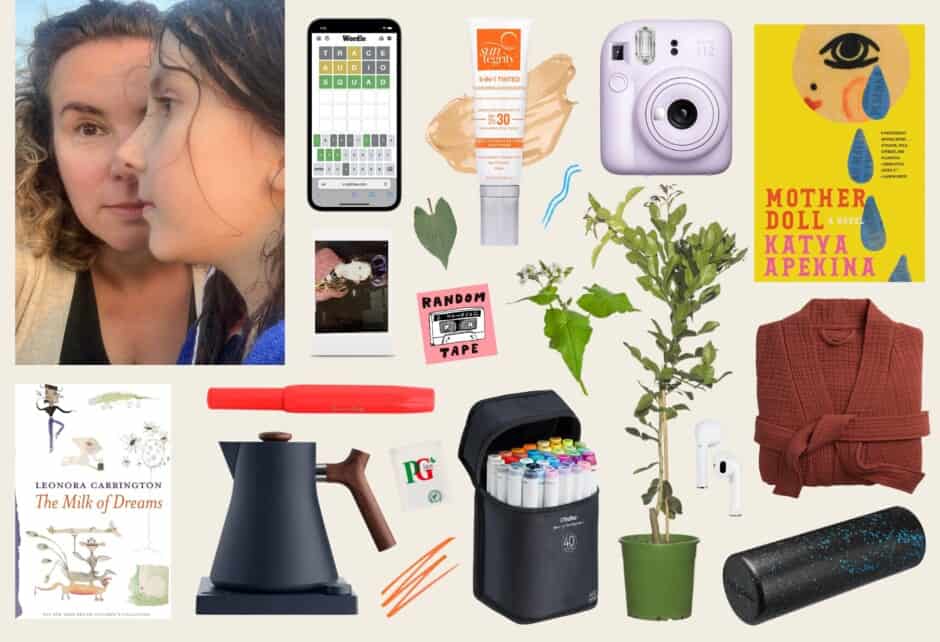
The Importance Of Play-Based Education In The Early Years
Written by Katie Hintz-Zambrano
Photography by Photographed by Nicki Sebastian
The power of play has been well-documented. But usually this is assumed to mean making sure your kids have plenty of unstructured play time incorporated into their days. However, if you’ve got kiddos between the ages of 2 and 6, author Heather Shumaker argues that play is pretty much all they should be doing. In her books It’s OK Not To Share and It’s OK To Go Up The Slide, the mother and journalist challenges many of our hard-held assumptions about child-rearing and has turned these into her so-called “renegade rules for raising competent and compassionate kids.” One such rule is banning all academics for little kids and instead priming them for play.
“What’s most precious in these early years (ages two to six) is play. Free, unstructured, child-directed playtime,” she writes. “It’s an old-fashioned idea with modern neuroscience backing it up. Kids need oodles of playtime. Efforts to ‘enrich’ or replace play with academic lessons are missing the extraordinary value of early childhood. In fact, rushing academic skills often backfires.”
Shumaker goes on to detail research that suggests any early education efforts don’t even make sense until the 7-year-mark, a.k.a. “the age of reason” in which kids are mentally ready to absorb a new way of learning—including counting, reading, and writing. “A child who is truly ready for academics can soak up these lessons quickly,” she says, pointing to studies that show academics during the preschool years can actually hurt academics in the elementary school years. “A 4-year-old will only be a 4-year-old once. Concentrate on meeting his present needs. Don’t foist future academics on him. If he’s allowed to truly play now—spontaneous play with room for running, leaping, ka-powing, crying, dancing, painting, spilling, and creative problem-soloving—then he will be ready for academics later. When children gain social and emotional skills and confidence in the preschool years, academic learning naturally follows.”
So, whether you are ditching the flashcards or not, what can you do to make sure play stays central in your youngster’s life? These are what Shumaker calls the Free-Play Essentials:
1. Time For Play. “Time is essential. Kids need plentiful unstructured time to play (in blocks of at least an hour). This means a child’s early years should be free from formal academics, and his early days should have hours of unscheduled time.”
2. Space For Play. “Kids need places to be where it’s OK to touch, explore, and get messy. Where can she be boisterous? Where can she discover the natural world? Your home does not have to be large, but you need to offer spaces (inside and out) where your child’s play is welcome.”
3. Support For Play. “Support comes in many forms. Resist encroachments on playtime. Rethink space. Dress your child in playclothes. Let your child be in the company of other children.”
Shumaker also warns against “false free play,” in which adults are guiding the child’s activities. “Playing with a child is fine,” she says. “Contributing ideas is fine, too; that’s part of play. But when you play with a young child, keep it child centered. Don’t dominate. Make sure it’s give and take.”
She also goes on to share seven points for Welcoming Free Play:
1. Make Literacy Joyful. “Young kids don’t need to study the alphabet. Sing songs, read nursery rhymes, and do finger plays and chants. Read to your child over and over again. Let kids fall in love with storytelling and the power of words now—reading will follow later.”
2. Go Outside. “The world of free play opens up outside. Go to the park, walk in the woods, or in the neighborhood. Play with balls. Seek out places with sand or water.”
3. Choose Open-Ended Toys. “The cardboard box is in the National Toy Hall of Fame. So are sticks and blankets. Give you child access to open-ended toys that promote imaginative play. Good ones: Bells, flashlights, funny hats, old keys, buckets or baskets, blocks, dress-up clothes, blankets, clay or play-dough, ordinary dolls or stuffed animals (branded characters limit play possibilities). Don’t forget sand, water, stones, puddles, and the cardboard box.”
4. Offer Space. “Kids need room to play. Give children space to spread out with their ‘play du jour.’ Make room by rotating out extra toys and removing furniture. Find a spot inside, if you can, where rough, boisterous play is welcome. Look for places where you can say yes rather than no.”
5. Cut Structured Activities. “Does your daughter enjoy soccer at age four? She’ll enjoy it more when she’s nine. Kick the ball instead at the park or backyard. Involve other kids. Make up your own games and laugh. For kids six and under, if you have two or more scheduled activities for your child a week, cut the number in half. If a fellow parent asks you what activities you are doing, answer politely and proudly, ‘Right now we’re mostly at home playing.'”
6. Look For A Play-Based Preschool. “This is harder to find than it used to be. If your child is already in preschool, go in and observe. Look for schools with at least three-quarters of the time devoted to free play in at least one- to two-hour blocks. Watch and see how much free play time kids actually get, both inside and outside, and how open-ended the play is.”
7. Slow Down. “Young kids move at their own pace. Unpack your days. Parenting takes time.”
Like what you hear? You can read up on plenty of other “renegade rules” for bringing up your kids, many of which were developed alongside the teachers at the School for Young Children in Ohio, in Shumaker’s two aforementioned books: It’s OK Not To Share and It’s OK To Go Up The Slide. You can also read about the Danes’ love for play in our interview with The Danish Way author Jessica Alexander.
Share this story



